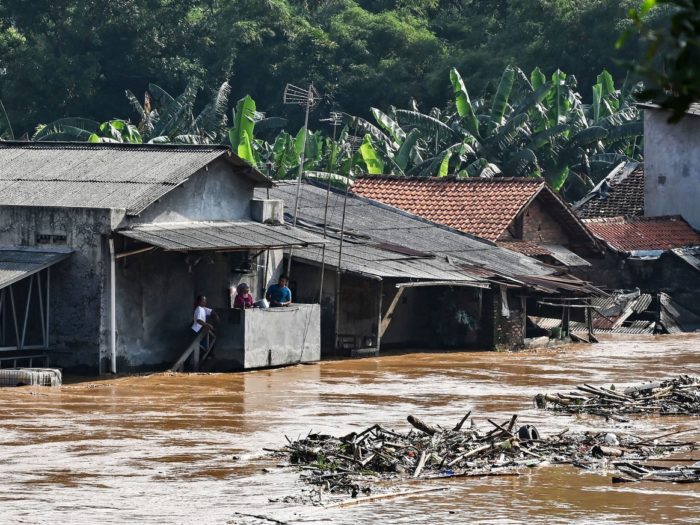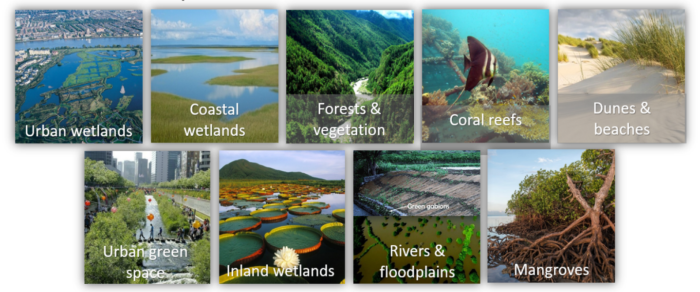Authors: Steven Carrion and Juliana Castano Isaza, World Bank
A large portion of the world’s population resides along coastlines. In fact, out of the top 23 megacities of the world, two-thirds are coastal cities. The high population density and the close proximity to the coast also makes these coastal cities highly vulnerable to natural disasters. Recent natural disasters have shown us the devasting toll these natural disasters can take on coastal regions. In Mozambique, flooding and storm surge caused by Cyclone Idai devasted large stretches of the country and resulted in the deaths of more than 4,000 people. In Jakarta, continuous heavy flooding has caused officials to consider moving the capital to higher grounds. And in Puerto Rico, the small island community is still reeling from the aftermath of Hurricane Maria, which heavily battered the coastline with 6-foot high storm surges.

With the advent of climate change, these coastal populations will face increasing risks from climate-driven sea level rise and more frequent, stronger storms. By 2050, it is estimated that there will be financial losses of about $60-63 billion per year due to coastal flooding in the largest 136 coastal cities. Without sufficient mitigation these losses could rise to an astonishing $1 trillion per year.
To make matters more complicated, natural disasters are not the only problem coastal regions have to worry about. You might have noticed the numerous wide-reaching articles and shocking reports in the news media these past few months detailing our current climate “break down” and biodiversity crisis. We now know that we have less than 12 years to lower our carbon emissions to prevent catastrophic climate change impacts, and that changing our unsustainable systems is a must if we are to save the 1 million species facing extinction. There is now impetus, as seen through emerging multi-lateral action and recent climate action protests, to bring about transformational change. This change would include drastically lowering greenhouse gas (GHG) emissions, such as the through the reforestation of natural forests, and protecting essential ecosystems, such as coral reefs and mangroves.
How can practitioners and decision-makers in the development and disaster risk management field facilitate climate-smart growth in a way that both reduces disaster risk, but also protects the environment we rely on? Well, thankfully, nature-based solutions have emerged as an innovative and cost-effective approach to protecting and enhancing resilience to natural disasters in coastal regions, while protecting the environment.
Nature-based solutions are defined as interventions that involve the use of green infrastructure, hybrid, or non-structural measures. Examples of green infrastructure includes and is not limited to constructed wetlands, mangroves, trees, and coral reefs. Well-designed nature-based solutions can also result in the creation of more resilient infrastructure, generate or support livelihoods, conserve biodiversity, enhance ecosystem services, and create empowered communities.
For instance, in a hypothetical hybrid project addressing coastal flooding and erosion, mangroves could be planted along already built sea dykes to add an additional layer of coastal protection. This would result in a more resilient infrastructure intervention as a mangrove “wall” would effectively attenuate wave energy and roots would stabilize sediment to reduce erosion. These mangroves would also increase carbon storage to help mitigate CO2 emissions, while also providing increased coverage of vital nursery habitat for fish, thus supporting fisheries. Engaging the community through the stakeholder processes and enacting a community-based restoration plan to implement this project would allow disaster risk management and resilience building to be devolved to the local community. This would result in a more thorough understanding of risks and risk management solutions within the community, ensuring long-term project buy-in and sustainability.
Understanding the importance of mainstreaming these next generation solutions to address development and environmental challenges, the World Bank and the Global facility of Disaster Reduction and Recovery (GFDRR) have launched the Nature-Based Solutions (NBS) initiative. The Initiative aims to shift the conventional disaster risk management approach, which has mainly focused on using “grey” infrastructure, to green and hybrid solutions as default options. To achieve this, the initiative works to build capacity for the uptake and scale-up of nature-based solutions by sharing best-practices, producing innovative knowledge products, and working with countries to reduce their disaster and climate risks through the use of nature-based solutions.

As part of our mission to build capacity for the uptake of these next generation solutions, the World Bank and GFDRR will lead a session on the topic at the Understanding Risk Caribbean conference. Our session will bring experienced professionals, including a special guest from Baird and Associate Ltd, a coastal engineering firm with experience using nature-based solutions in Barbados, to share their experiences and familiarize participants with nature-based solutions for coastal protection. The session will also stray from the conventional panel or presentation-heavy format, and instead focus on involving participants in an interactive, team simulated decision-making activity. As part of this group activity, the participants will be split into different Caribbean country groups. Groups will then have to work collaboratively to propose feasible nature-based solutions for an issue they are currently working on in their respective countries, considering possible barriers and challenges. The session will wrap-up with group presentations and discussions on ideas presented. The end goal of this session is to initiate conversations on future nature-based solution investments.
Interested in attending this exciting session? Come take part in our session on Wednesday May 29, at 10 AM. We look forward to seeing you!
Session: Letting Nature Protect Us: Nature-based Infrastructure for Coastal Protection
